Name Muhammad Najafi Website Official Website | Era Modern history Period in office 1980–present Role Ayatollah | |
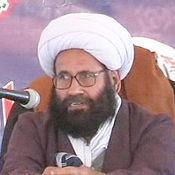 | ||
Other names Urdu/Punjabi: محمد حسین نجفی People also search for Ali Naqi Naqvi, Muhsin al-Hakim, Naser Makarem Shirazi | ||
Q&A Session (1 of 2) - Convention of Ayatollah Muhammad Hussain Najafi's Seminary 2009
Grand Ayatollah Allama Shaikh Muhammad Hussain Najafi Urdu/Punjabi: آية الله العظمی علامہ الشیخ محمد حسین النجفي; born April 10, 1932) is a Twelver Shi'i alim from Pakistan and has been elevated to the status of marjiyyat. At present, there are two maraji of Pakistani descent, the other one Basheer Hussain Najafi. As Basheer Hussain Najafi has chosen to reside in Najaf, Iraq, Muhammad Hussain Najafi is the only marja' on Pakistani soil, running a Hawza in Sargodha.
He has been included in the last 5 editions of "The Muslim 500: The World's Most Influential Muslims" since 2010. He is one of the 9 marja's mentioned in the most recent edition.
Contents
- QA Session 1 of 2 Convention of Ayatollah Muhammad Hussain Najafis Seminary 2009
- QA Session 2 of 2 2011 Convention of Ayatollah Muhammad Hussain Najafis Seminary
- Childhood and family
- Early education in Pakistan
- Marital life
- Education at Hawza Elmiye Najaf
- Ijtihad and Marjiyyat
- Principal of Dar ul Uloom Muhammadia
- Participation in Shia educational affairs
- Participation in Shia politics
- Jamia Sultan ul Madaris
- Burning of library
- Participation in 17th Islamic Unity Conference Tehran
- Participation in 21st Islamic Unity Conference Tehran
- Majalis and QA sessions
- Controversy
- Books
- References
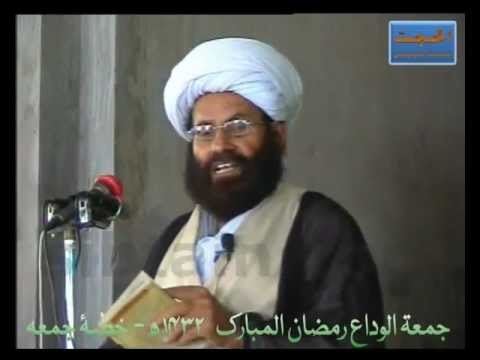
Q&A Session (2 of 2) - 2011 Convention of Ayatollah Muhammad Hussain Najafi's Seminary
Childhood and family
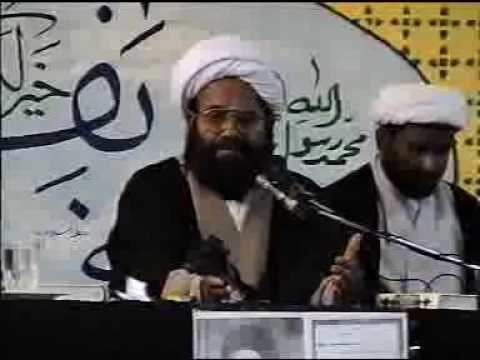
Muhammad Hussain was born in small town of Jehania shah in sargodha District of Punjab province of Pakistan on April 1932. He had two paternal uncles, both of whom were Shia ulema: Maulana Imam Bakhsh was a religious teacher in Jahanian Shah, while Maulana Sohrab Ali Khan was a reputed alim of Uch Sharif. His father Rana Tajuddin was not an alim, but he had the wish of making his son a great alim. However, he died in 1944 when Muhammad Hussain was 12 years old, after which the family members persuaded the widow that Muhammad Hussain should look after the family lands, but she kept up the wish of her dead husband.
Early education in Pakistan
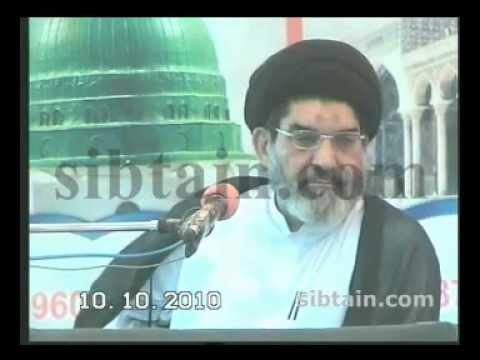
After secondary school education, he got admission in Madrasah Muhammadia in Jalalpur Nankiana, Sargodha, where one of his prominent teachers was Ayatollah Allama Hussain Bakhsh Jarra. In 1947, he studied the courses of Dars-i-Nizami from Ayatollah Allama Muhammad Baqir Naqvi in Jhang. Allama Baqir Naqvi had migrated from Iraq to spread Shia formal education in Pakistan. Since (the First Biggest prominent Shia scholar in Pakistan Ustad ul ulama) Grand Ayatollah Allama Syed Muhammad Yar Shah Naqvi Najfi, the most prominent disciple of Allama Baqir Naqvi, had moved from his ancestral city Alipur to Jalalpur, Muhammad Hussain moved to Jalalpur to complete Dars-i-Nizami for the next five years. In 1953, he passed the examination of Molvi Fazil from Punjab University, and moved to Najaf in 1954 for higher education.
Marital life
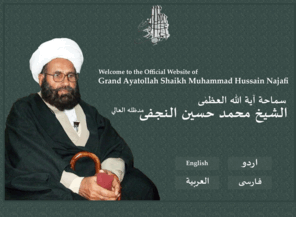
Before going to Najaf for higher religious education, he was married to his maternal cousin in 1952. His teacher Allama Yar Shah had links with ulema of Najaf, and he wanted Muhammad Hussain to get married in a scholarly family of Najaf, but Muhammad Hussain declined this proposal due to cultural differences. In 1954, his only son Muhammad Sibtain was born. At the age of five, he got seriously ill and died, as Muhammad Hussain did not have enough money for his treatment. (Muhammad Hussain used to spend his stipend money on household and buying books.) After Sibtain's death, Ayatollah Najafi did not have children for next eleven years. He married the daughter of Haji Muhammad Shafi (Faisalabad) in 1970. He had three daughters from this marriage. His first wife died in 1996.
Education at Hawza Elmiye Najaf
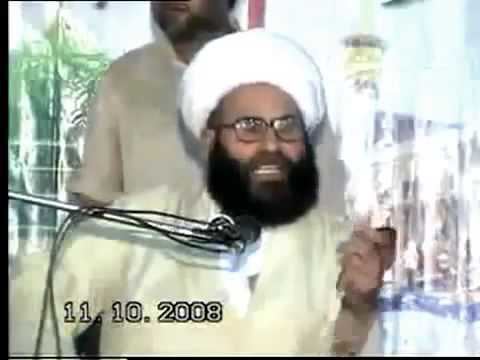
In 1954, he moved to Hawza Elmiye Najaf to finalize his religious education . He attended the lectures of the following marjas:
- Grand Ayatollah Mohsin Al-Hakim for dars-e-kharij of Fiqh
- Grand Ayatollah Sayyed Javad Tabrizi for dars-e-kharij of Kifaya-tul-Usool
- Grand Ayatollah Meerza Baqir Zanjani for dars-e-kharij of Usool-e-Fiqh
- Grand Ayatollah Bazurg Tehrani for Fehm-e-Hadees-o-Rajjal & Kutb Shanasi
- Grand Ayatollah Mahmood Shahroudi for dars-e-kharij of Fiqh
- Grand Ayatollah Abdul Aala Sabzwari for dars-e-kharij of Fiqh
- Grand Ayatollah Abul Qasim Rashti for Rasail-o-Makatib
- Grand Ayatollah Abdul Hussain Amini (the writer of famous Al-Ghadeer) for Ilm-e-Munazira
- Grand Ayatollah Mulla Sadra for Satheeyat & Asfar
- Grand Ayatollah Aqae Muhaqqiq for Darse Manzooma Sabzwari
- Grand Ayatollah Aqae Fazel for Ilm-e-Kalam
- Grand Ayatollah Abdul Karim Zanjani for Tanawwo dar Islami Uloom-o-Funoon and Ittehad-e-Islami
In an interview to the Hawza Elmiye Qom's monthly magazine "Hawza", he was asked:
Hawza Team: Hazrat, tell us about your education at Hawza Elmiye Najaf and your teachers there.Ustad Najafi: My stay at Najaf was short ... I completed my education in 6 years ... At Najaf, the total number of courses I used to study and teach daily often reached up to ten. ... Once my teacher Grand Ayatollah Shaikh Jawad Tabrizi said to me in light mood:"Why do you take so much strain, what is the logic in taking ten courses daily? Iranians say: 'The climate of Najaf is dry, thus taking one course in Najaf is not enough, but taking two courses is more than enough.'"He wrote the following books during his stay at Najaf:
- Isbat ul-Imamat
- Tahqeeqat ul-Fariqain fi Hadis as-Saqlain
- Iqd ul-Juma'n (Translation of Mafatih al-Janan)
- A'dab ul-Mufeed wal Mustafeed (Translation of Munia tul-Murid)
- Faiz ur-Rehman (Translation of Lu'lu wal Marjan)
Grand Ayatollah Bazurg Tehrani has mentioned these books in his famous book Az-Zariya ila Tasaneef ush-Shia (A list of Shia Books), and Aalulbayt Global information Center has mentioned these books in their Musannifat-ush-Shia (Shia Books). Najafi is fluent in Arabic, Persian, Punjabi and Urdu languages.
Ijtihad and Marjiyyat
He received ijazah's of ijtihad from following marjas of Hawza Elmiye Najaf, in 1960 AD (1379 AH):
- Grand Ayatollah Mohsin Al-Hakim
- Grand Ayatollah Sayyed Javad Tabrizi
- Grand Ayatollah Mara'shi Najafi
- Grand Ayatollah Meerza Baqir Zanjani
- Grand Ayatollah Bazurg Tehrani
- Grand Ayatollah Mahmood Shahroudi
- Grand Ayatollah Abdul Aala Sabzwari
- Grand Ayatollah Abul Qasim Rashti
- Grand Ayatollah Abdul Karim Zanjani
- Grand Ayatollah Najam ud-Din ash-Sharif as-Samarrai
- Grand Ayatollah Muhammad Raza al-Musavi
- Grand Ayatollah Muhammad Mahdi al-Kazmaini
- Grand Ayatollah Ahmed al-Mustanbit
He published his Tawzih ul Masail named "Qawaneen ush-Sharia fi Fiqh-e-Jafariya" in 1980 AD (1400 AH). He is being followed by a number of Shia Muslims in matters of fiqh from Pakistan and abroad.
Principal of Dar-ul-Uloom Muhammadia
After returning to Pakistan in 1960, Pir Fazal Shah (Parhezgar) asked him to become the principal of Dar-ul-Uloom Muhammadia, Sargodha, which he eagerly accepted.
In 1971, due to increased involvement in majalis and Shia political movements it became impossible for him to run the affairs of Dar-ul-Uloom Muhammadia, therefore he stepped down from this post.
Participation in Shia educational affairs
In 1963, the principals of Shia madrasahs from all over Pakistan gathered in Karbala Gamey Shah, Lahore, and founded Tanzeeme Madarise Arabia Shia Pakistan (Organization of Shia Madrasahs of Pakistan). Ayatollah Najafi was elected its president.
In 1965, a high-level organization of Shia ulema Mautamar Ulemae Shia Pakistan (Conference of Shia Ulema of Pakistan) was formed with Ayatollah Najafi as its president. and Mufti Jafar Hussain as its patron. Other members included Allama Gulab Ali Shah, Allama Akhtar Abbas, Allama Hussain Bakhsh Jarra, Hafiz Saifullah Jafari, Allama Syed Safdar Hussain Najafi, Mufti Inayat Ali Shah, Allama Muhib Hussain, Allama Riaz Hussain Najafi and Allama Ghulam Hassan Jarra.
Participation in Shia politics
In 1964, Ayatollah Muhammad Hussain Najafi played a pivotal role in gathering about 250 Shia ulema and leaders in Imam Bargah Rizvia, Karachi, where "Shia Mutalbat Committee" was formed with Syed Muhammad Dehlavi as its president.
In 1978, after Zia ul Haq's announcement of promulgating Hanafi fiqh, Shia ulema and leaders gathered in Bhakkar and founded Tehrik-e-Nifaz-e-Fiqh-e-Jafaria (later called Tehrik-e-Jafaria Pakistan) with Mufti Jafar Hussain as its president. Ayatollah Najafi was a part of this organization's supreme council. After Mufti Jafar's demise, it was upon Ayatollah Najafi's recommendation that Allama Arif Hussain Hussaini was elected the new president of the organization.
Jamia Sultan ul-Madaris
In 1978, Raja Mumtaz Ali Khan gifted 3-acre (12,000 m2) land to Ayatollah Najafi for madrasah, on which Jamia Ilmia Sultan ul-Madaris al-Islamia was constructed.
In 2004, he founded Jamia Aqeela bani Hashim for the religious education of women.
He is also the patron of the following madrasahs:
- Madrasah Muhammadia, Sargodha
- Madrasah Ahya ul-Uloom Haideria, Mandi Bahauddin
- Madrasah Baqir ul-Uloom, Bhakkar
- Madrasah Wali ul-Asr, Jhang
- Madrasah Hazrat Amir ul-Momineen, Layyah
- Madrasah Jamia tul-Qaim, Layyah
- Madrasah Jafaria, Uch Sharif
- Madrasah Bab ul-Hussain, Dera Ismail Khan
Burning of library
After the publication of "Tajalliat-e-Sadaqat", which was written in response to the anti-Shia book "Aftab-e-Hidayat", his family library was set ablaze by the opposite sect in Muharram 1983. He was in Quetta for reciting majalis of Muharram.
Participation in 17th Islamic Unity Conference, Tehran
On the invitation of the Iranian Supreme Leader Grand Ayatollah Ali Khamenei, he attended the 17th Islamic Unity Conference in Tehran, Iran in May 2004.
He also visited Hawza Elmiye Qom, where he had meetings with Ayatollah Morteza Moghtadai, Grand Ayatollah Hossein Noori Hamedani and Grand Ayatollah Naser Makarem Shirazi. He was interviewed by the state television and the Hawza Elmiye Qom's official magazine Hawza.
Participation in 21st Islamic Unity Conference, Tehran
On the invitation of the Iranian Supreme Leader Grand Ayatollah Ali Khamenei, he attended the 21st Islamic Unity Conference in Tehran, Iran in May 2008, along with Allama Sajid Naqvi, Shaikh Mohsin Najafi, Hafiz Riaz Hussain Najafi and Maulana Sami ul Haq.
He also visited Hawza Elmiye Qom, where he had meetings with Ayatollah Jafar Subhani, Grand Ayatollah Mohammad Shahroudi, Grand Ayatollah Mousa Shubairi Zanjani, Grand Ayatollah Qorban Ali Kaboli, Ayatollah Ahmed Mobalighi and Grand Ayatollah Naser Makarem Shirazi. He also addressed a gathering arranged in memory of Shaikh Aktar Abbas Najafi and Shaheed Ghulam Hussain Najafi in Madrasah Hojatieh, Hawza Elmiye Qom.
Majalis and Q&A sessions
For past thirty years, he has been addressing majalis in almost all parts of Punjab, Pakistan. For the last five years he has been addressing majalis in Imambargah Shah Gardez, Multan where all the major Shia ulema address majalis before him, including Allama Akhter Abbas Naseem, Principal of Madrasah Jamia tus-Saqlain, Multan. Last year the famous Ayatollah Syed Aqeel-ul-Gharavi also addressed majalis at the same place.
He has also been addressing post-Muharram majalis in Islamabad and Birmingham, England for many years.
After his majalis, questions pertaining to fiqh, aqaid and tafsir are put before him from the gathering. He gives answers to these questions with references from Quran and Hadith of The Fourteen Infallibles. At certain occasions, these Q&A sessions have spanned hours.
Controversy
Some of the Shias oppose Muhammad Hussain Najafi because of his controversial beliefs. They say that he does not believe in the merits of Ahl al-Bayt (the Family of Prophet Muhammad) unlike the majority of Shi'ite scholars. Controversies started with his books that he wrote on several topics. Some Shi'ite believe that Muhammad Hussain Najafi is the person who claims that Ahl al-Bayt are no more than ordinary human beings and that is what is against the basic faith of Shi'ite Islam. The study finds that his book Usool ush-Sharia fi Aqaid ush-Shia is full of controversial accounts. Some believe that accounts of his other books are also against the Shi'ite faith, especially Islahul Rusoom where he denies the beliefs in Tawassul, Shafa'ah as well as other Shi'a tenets. His teachings are similar to other controversial figures like Sheikh Muhammad Khalisi and Sayyid Muhammad Hussein Fadhlullah.
Books
It is a 10-volume comprehensive Tafsir of Quran.
It is the Urdu translation of the great Shia book of Hadith Wasael ush-Shia by Shaikh al-Hur al-Aamili. 13 volumes out of 20 have been published.
It is the Urdu translation & explanation of Shaikh al-Hur al-Aamili's book on Hadith Qudsi.
It is a 2-volume Urdu translation & explanation of Sheikh Saduq's famous Risala "Al-Aqaid". It contains all the Shia beliefs, and their truthfulness in the light of Quran and Hadith.
This book discusses the beliefs of Ghali's, Tafwizi's and Shaykhi's (which they have spread in the name of Shia Islam), and negates them in the light of Quran and Hadith.
It is the Urdu translation & explanation of Allama Majlisi's "Risala tul-Lailia".
It is a 2-volume fiqhi book, covering all the aspects of human life according to Jafari Jurisprudence, including the modern human issues. The superiority of Jafari Jurisprudence over other Islamic Schools of Jurisprudence has been proved in the light of Quran and Hadith.
It is an abridged version of Qawaneen ush-Sharia.
This book discusses the hurmat of ghina in Islamic Sharia.
This book discusses the hurmat of shaving beard in Islamic Sharia.
It is a book proving that Juma Prayers are wajib even in Imam Mahdi's Ghaibat. It was published by Syed Muhammad Dehlavi in Karachi.
Ayatollah Najafi translated Mafatih al-Janan during his stay at Najaf, but did not publish it as another translation was published from Lahore.
Grand Ayatollah Bazurg Tehrani has mentioned it in his famous book "Az-Zariya ila Tasaneef ush-Shia" (A list of Shia Books), and Grand Ayatollah Hussaini in his book "Ziyarat".
It is a collection of supplications from reliable Shia books.
It is a comprehensive account of the Battle of Karbala in 61 AH and the tragic martyrdom of Husayn ibn Ali, all narrated from reliable sources only.
Ayatollah Najafi translated Allama Noori's famous book Lu'lu wal Marjan during his stay at Najaf, but did not publish it as another translation "Jawahir ul-Bayan" was published from Sargodha.
Grand Ayatollah Bazurg Tehrani has mentioned it in his famous book "Az-Zariya ila Tasaneef ush-Shia" (A list of Shia Books), and has written that its foreword about hurmat of ghina is indeed useful.
It contains biographies of the five martyr Shia ulema:
- Shaheed-e-Awal Muhammad Jamal uddin Makki Amili
- Shaheed-e-Sani Zain uddin Amili
- Shaheed-e-Salis Qazi Nurullah Shustari
- Shaheed-e-Rabey Mirza Muhammad Kamil Dehlavi
- Shaheed-e-Khamis Mohammad Baqir al-Sadr
It is a book on the issue of Khilafat & Imamat, and establishes that Imam Ali was the true successor to the Prophet.
Grand Ayatollah Bazurg Tehrani has mentioned it in his famous book "Az-Zariya ila Tasaneef ush-Shia" (A list of Shia Books).
It is a book presenting extensive research from both the Shia & Sunni books of Hadith, as regards the truthfulness of Hadith of the two weighty things (Hadis as-Saqlain).
Grand Ayatollah Bazurg Tehrani has mentioned it in his famous book "Az-Zariya ila Tasaneef ush-Shia" (A list of Shia Books).
It is a 2-volume book in response to the anti-Shia book "Aftab-e-Hidayat" by Maulvi Karam Deen.
It is the book in response to the anti-Shia risala "Mazhab ush-Shia" by Pir Siyyalvi.
This book proves Khatme Nabuwwat (i.e. Prophethood has come to an end after Muhammad.)
Ayatollah Najafi translated Shaheed-e-Sani's famous book Munia tul-Murid during his stay at Najaf, but did not publish it as another translation by Mufti Inayat Ali Shah was published.
Grand Ayatollah Bazurg Tehrani has mentioned it in his famous book "Az-Zariya ila Tasaneef ush-Shia" (A list of Shia Books).
This book discuss the wrong customs associated with majlis of Imam Hussain, and how to correct them.
It is a comprehensive book discussing all the bid‘ah's and false customs in Islamic society, and how to correct them.
